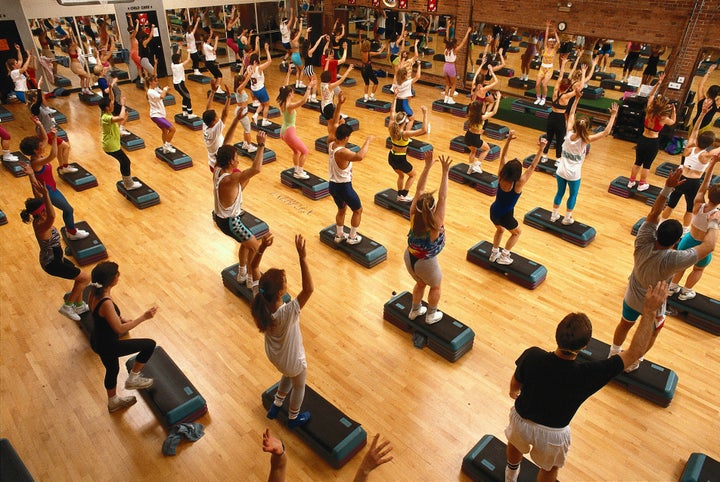
The Question: I’ve been reading a lot about HIIT. Should I give it a try, even though I’m out of shape?
Answer: Yes. Yes, you should.
HIIT, which stands for high-intensity interval training, is a type of work out that typically alternates between brief spurts of balls-to-the-wall, vigorous exercise and a few minutes of recovery time. This is repeated until you get to the end of the session, which is usually less than 30 minutes.
Athletes have been interval training for decades to make quick performance gains in the shortest amount of time. But well-established research on HIIT shows it has promising benefits for everyone else, too, like increased aerobic and anaerobic fitness, more muscle mass and less insulin resistance.
Compared to “steady state” exercise, in which a person maintains a steady pace for a longer amount of time (e.g, an hour on an elliptical), HIIT has also been shown to accelerate fat loss. In one example from a 2008 study, young women who did a 20-minute HIIT routine on exercise bikes lost an average of 5.5 pounds more fat over a 15-week period than women who did a 40-minute steady state cycle ride.
In other words, the HIIT women lost more fat in half the workout time than women who kept things at an even pace.
But starting an HIIT program can be daunting. For instance, most of the research on HIIT involves participants exceeding 90 percent of maximal oxygen uptake, or the volume of oxygen your body uses during exercise. Even though most HIIT sessions are relatively short, for a person just starting to exercise, it can be intimidating to try to push yourself to your limits in public spaces like classes or gyms.
But it doesn’t have to be that way, says Josh Carter, a personal trainer, HIIT expert and owner of Fit Body Boot Camp in West Hills, Calif. Carter says workouts can be scaled to anyone’s fitness levels, from a post-sedentary beginner to the leanest athlete.
"There is a common myth that HIIT workouts are (or must be) super brutal, but this is just not true,” Carter told HuffPost. “As time goes by you will see that your ability level increases as your body adapts and gets leaner, tighter and stronger."
How to turn HIIT into 'MIIT'
Micah Zuhl, an HIIT researcher and professor at Central Michigan University’s School of Health Sciences, agrees, pointing to new research on the effects of moderate intensity interval training.
A 2013 study of people with Type 2 diabetes, for example, found that participants who were randomized to alternate between fast and slow walking intervals lost weight and fat mass and were able to lower their blood sugar levels. The control group walked at a continuous pace for the same amount of time as the interval walkers, but didn't lose any weight, and their blood sugar and insulin levels actually worsened.
To start a "moderate HIIT" (or MIIT) practice, alternate between bursts of moderate (not high) intensity exercise and recovery periods. One sample workout Zuhl suggests for beginners is to walk on a treadmill with an incline for two to four minutes, and then rest another two to four minutes by walking with no incline before increasing it again.
"You don’t want to be in a situation of extreme muscle soreness or cause an injury,” he said.

But don't give up your regular jog just yet
Just because there’s a lot to be gained with HIIT doesn’t mean you should throw out your tried and true steady state exercises, said Len Kravitz, an HIIT researcher and coordinator of exercise science at the University of New Mexico. The best thing to do is give your muscles the best variety possible.
"From a molecular biology viewpoint, it is absolutely best to mix HIIT workouts with steady state workouts,” Kravitz said. “There are many great changes that positively occur (in muscle cells) with steady state workouts."
All three experts say they wouldn’t recommend doing HIIT or interval training more than three times per week, with adequate spacing in between, in order to give your muscle groups time to rest. In fact, Kravitz suggests starting out by doing HIIT only once a week at first.
“Progress slowly and always keep the intensity comfortable but challenging,” he said. “When exercise becomes uncomfortable, people drop out."
And, as always, if you have preexisting health conditions, check with your doctor before starting a new exercise plan.
Have a question for Healthy Living? Get in touch here and we'll do our best to ask the experts and get back to you.
"Ask Healthy Living" is for informational purposes only and is not a substitute for medical advice. Please consult a qualified health care professional for personalized medical advice.
Also on HuffPost:
